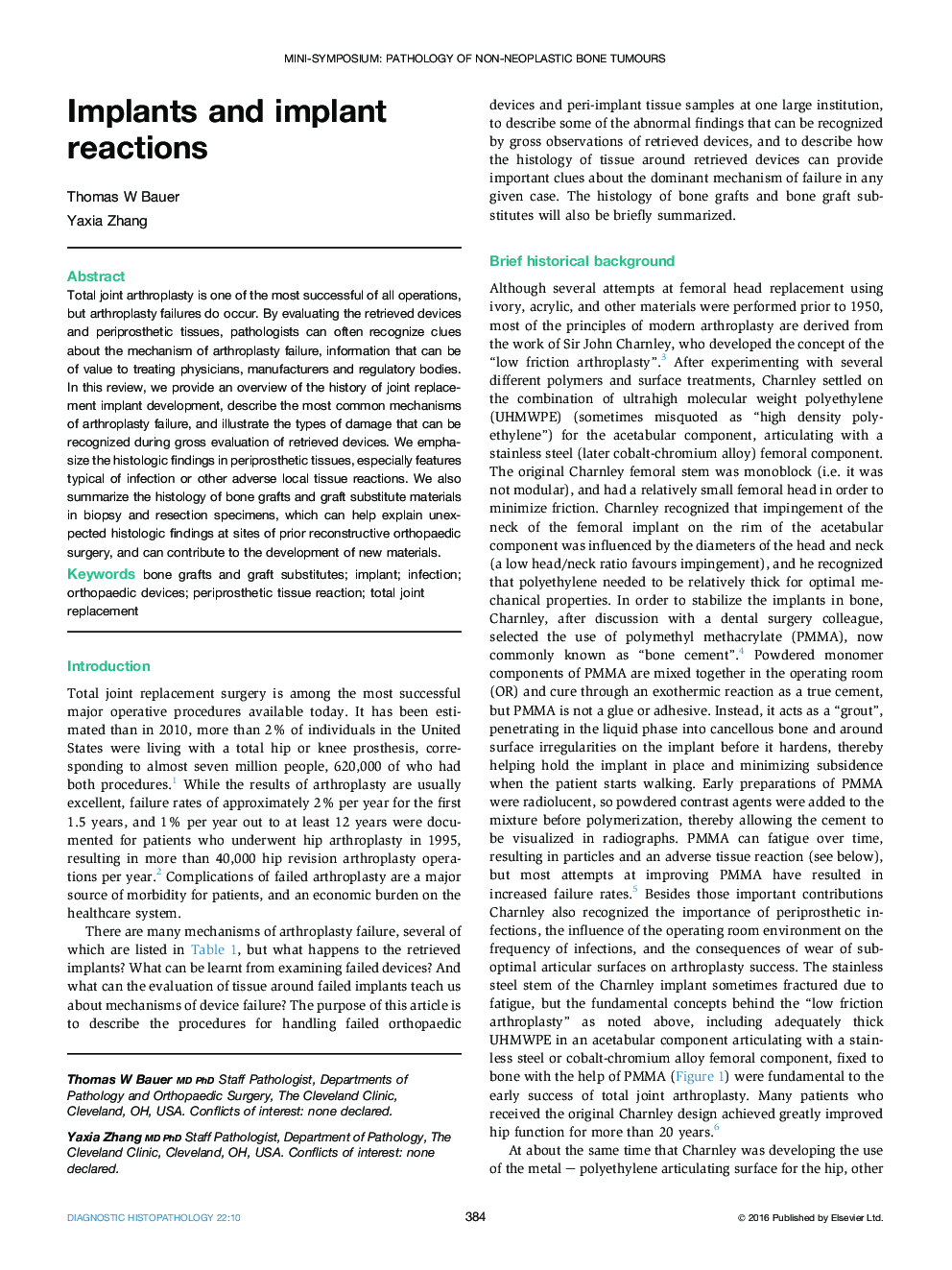| Article ID | Journal | Published Year | Pages | File Type |
|---|---|---|---|---|
| 5716079 | Diagnostic Histopathology | 2016 | 13 Pages |
Total joint arthroplasty is one of the most successful of all operations, but arthroplasty failures do occur. By evaluating the retrieved devices and periprosthetic tissues, pathologists can often recognize clues about the mechanism of arthroplasty failure, information that can be of value to treating physicians, manufacturers and regulatory bodies. In this review, we provide an overview of the history of joint replacement implant development, describe the most common mechanisms of arthroplasty failure, and illustrate the types of damage that can be recognized during gross evaluation of retrieved devices. We emphasize the histologic findings in periprosthetic tissues, especially features typical of infection or other adverse local tissue reactions. We also summarize the histology of bone grafts and graft substitute materials in biopsy and resection specimens, which can help explain unexpected histologic findings at sites of prior reconstructive orthopaedic surgery, and can contribute to the development of new materials.
